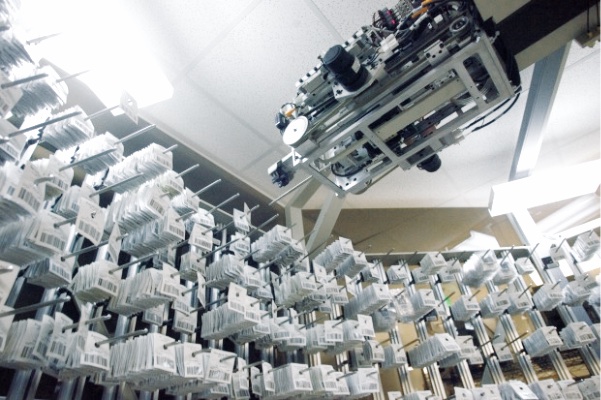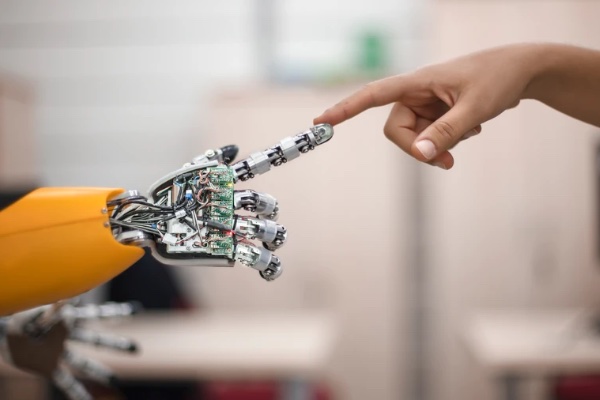ANTONIO LÓPEZ | Tungsteno
Robots will get increasingly more intelligent, cheaper and faster, a cocktail of characteristics that makes it inevitable that they will become the commonplace companions of healthcare workers. Moreover, it is expected that their prevalence will more than double in the first five years of this decade. Thanks to new technological advances, robotics will make it possible to complete tasks with greater precision and in less time, which will have a direct impact on patient health and the quality of the care they receive.
Robot surgeons: undeniable allies in the operating room
In the operating room, the use of robotics has countless possible applications, all of them aimed at facilitating the work of the surgeon and minimising the risks for the patient. Among the surgical robots there is a clear leader, the da Vinci system. Founded in Silicon Valley, in 2000 it became the first robotic system approved for surgery by the FDA (the U.S. Food and Drug Administration) and, since then, it has become the most widely used throughout the world —including Spain, where it made its debut 15 years ago. Da Vinci provides the surgeon with a 3D image of the inside of the patient's body and, using a console as an interface, prevents tremors and improves the doctor's comfort during long operations.
To date, robot-assisted surgery has proven to be effective in minimising the size of incisions and blood loss, which speeds up patient recovery. This is why there are already several companies focused on developing robots specialised in specific operations, for example in knee or hip replacement. Work is also being done on such crucial aspects as surgical decision-making, with some robotic systems incorporating artificial intelligence.
But surgical assistive robots require the participation of a medical professional at some point, which also limits the number of operations that can be performed. The implementation of 5G technology would make it possible to turn any operating room in the world into a remote one, allowing specialists to perform surgery wherever they want to be, under safe conditions. These surgical interventions have already proven effective, so the fifth mobile generation opens up numerous possibilities for telemedicine in the near future.

The incorporation of automatons in the operating rooms, such as the Da Vinci robot, allows more complex interventions to be carried out in less time, reducing risks for the patient. Credit: Intuitive Surgical.
Sensors and prostheses for remote diagnostics
These innovations are already redefining even the physical boundaries of the hospital, thanks to the development of telemedicine and telematic diagnostics. Several projects are already underway in this direction. One example is the Medical Tele-Diagnosis Robot (MTR), a robot equipped with sensors and an Internet connection that enables remote diagnoses to be made. In the same vein, researchers at the University of Houston have designed a robotic hand that, thanks to a new rubbery semiconductor nanofilm material, collects information about the patient through a "smart skin" and sends it to the doctor.
In parallel, bionic skins combined with neural implants, which interact directly with the nervous system, hold the promise of revolutionising rehabilitation in physiotherapy, traumatology and spinal cord injuries. The development of these intelligent interfaces makes it possible to collect and transmit information, as well as interconnect with other surfaces such as human skin, to the point that the MIT Biomechatronics Lab, for example, has even created a prosthesis that the user can control voluntarily, almost as if it were another limb.
Robotic disinfection, logistics and pharmacy work
Automatons are also evolving to perform more and more logistical or cleaning tasks that relieve the workload of healthcare workers while limiting their exposure to bacteria and microorganisms that pose a risk to their health. The Xenex robot, which uses pulsed xenon light to disinfect operating theatres and hospital rooms, or the TUG autonomous robot from Aethon, which can deliver samples, food and medicines within medical facilities, are both working towards this goal. In fact, in the context of the pandemic, unmanned vehicles have already been seen performing these functions to prevent human contact and protect medical professionals.
Outside the hospital, robots are also useful in pharmacies, where having the assistance of machines can help to minimise errors and save costs. For example, the ROBOT-Rx, developed by McKesson, is programmed to process, store and replenish medications. There are even projects already in operation that use technology together with electronics to prepare and track medication doses with the aim of improving patient safety, as is the case for the 100% robotic pharmacy prototype already in operation at the University of California.

The robots allow to optimize the processes in the dispensing of medicines and prescriptions, minimizing errors, saving costs and improving patient safety. Credit: McKesson.
Nanotechnology and precision medicine
The tag-team of robotics and nanotechnology is also working to minimise the invasive effects of diagnostic tests and treatments. This alliance is already being applied in the performance of biopsies or the removal of tumours, improving the precision and accuracy of the procedures, as well as in the repair of heart valves. The MURAB robotic-assisted biopsy system, for example, uses ultrasound to direct a transducer to the tissue to be biopsied.
The field of diagnostic tests in which the application of automatons can improve both the results and the performance and turnaround times, which in these cases can be critical, is becoming increasingly broad. For example, endoscopies are already being carried out using microrobots. These small devices travel through the blood vessels and, in addition, can administer treatment to specific sites in the body, thus reducing the undesired effects of broad-spectrum treatments.
The application of robotics in the medical and patient care industry continues to open up promising opportunities, but even so, there are still numerous challenges to be faced. These include the high costs involved in their development and the necessary training of medical professionals, but also other considerations arising from the use of these new technologies, such as data protection and cybersecurity or the definitive rollout of 5G connectivity.
· — —
Tungsteno is a journalism laboratory to scan the essence of innovation. Devised by Materia Publicaciones Científicas for Sacyr’s blog.
